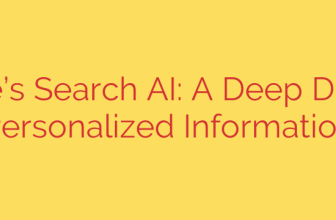
In today’s complex digital landscape, understanding and controlling who or what has access to sensitive resources is the cornerstone of robust security. This fundamental principle is managed through Identity and Access Management (IAM), a critical framework that authenticates users and entities and authorizes their level of access based on defined policies.
As Artificial Intelligence (AI) becomes increasingly integrated into business operations, it introduces unprecedented opportunities alongside significant cybersecurity challenges. AI systems often handle vast quantities of data, interact with critical infrastructure, and represent valuable intellectual property. Securing these complex systems is paramount.
The foundation for securing AI is a strong IAM strategy. Without it, the doors are left open for unauthorized access, data breaches, model manipulation, and misuse of AI capabilities. IAM ensures that only authenticated and authorized individuals, applications, and even other AI systems can access AI models, training data, inferencing endpoints, and the underlying infrastructure.
Key principles become even more vital in the context of AI cybersecurity. Implementing least privilege ensures that users and AI components are granted only the minimum access necessary to perform their specific tasks. This significantly reduces the potential blast radius of a compromise. Adopting a Zero Trust approach means that no user or system, whether inside or outside the network, is automatically trusted; access must be continuously verified based on identity and context.
Effective IAM for AI involves managing diverse identities – from human developers and data scientists to non-human identities like API keys, service accounts, and the identities of the AI models themselves. Rigorous access control prevents unauthorized individuals from accessing sensitive training data that could be used for adversarial attacks or from tampering with models, which could lead to biased outcomes or security vulnerabilities.
Protecting the AI development and deployment pipelines also relies heavily on IAM. Controlling access to code repositories, model registries, and deployment environments is essential to prevent malicious code injection or model poisoning.
Ultimately, while AI can be a powerful tool for enhancing cybersecurity defenses, its own security hinges on a solid foundation. Effective IAM is not just a component of AI security; it is the essential bedrock upon which secure AI systems are built and maintained. Organizations must prioritize implementing comprehensive and adaptable IAM solutions to protect their AI investments and navigate the evolving threat landscape effectively.
Source: https://www.helpnetsecurity.com/2025/06/06/benny-porat-twine-security-ai-driven-security-decisions/








